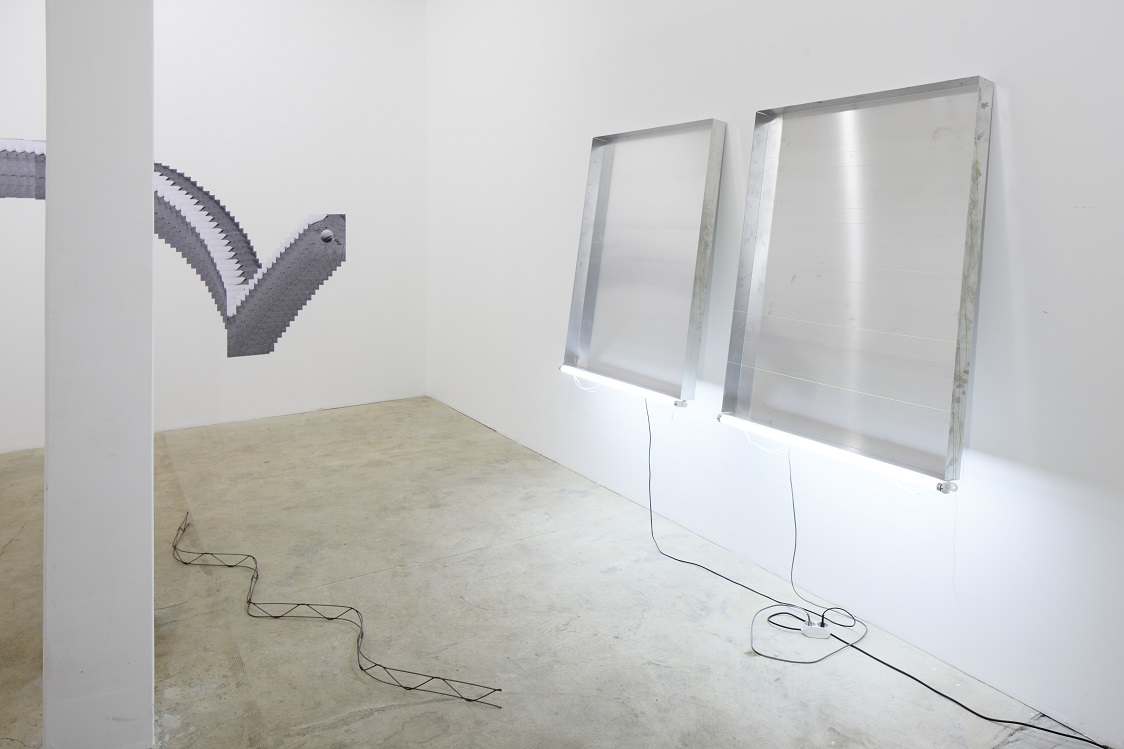
What is Lost is Lost Forever
Katrīna Čemme
kim? Contemporary Art Centre
May 20-July 9, 2017
An object becomes real, when it is seen. And it’s impossible to make it be non-existent or unseen. It has been made and it exists, it has become a reality, it has been born and at least will have been. What form will it take, what weight will it attain, and where to project it, is the choice of the observer. Time does not exist; different distances exist between the subject and the object, imagined sides to take on a field, and speeds to choose. You have to find a perspective and/or research all possible directions.
Each observation is a compromise between chaos and order, between a feverous impulse and paranoia, and fossilized logic. Both the eternal speed of feelings, and the stretching of the rubber band in the deceleration of thought radicalizes the object – either erases it from this moment, or permanently affixes it. And thus the indulgence in any one of the extremes means you risk losing it from your field of perception. The question remains: is it the movement of the object or the intensity of awareness? Does only one common reality exist among different paces of consciousness?
Attempt ′
Indulging in inexhaustible opportunities of the moment, and craving to create an object again and again, I infinitely repeat it. Reaching the speed of light, an object breaks up into countless opportunities and disappears between worlds.
Attempt ″
A moment is reflected in the touchdown of thought; it is stretched in the length of a light year. I will slow time to zero and keep it as a memory. I can’t lose it, it is important. It gains weight and remains “a reminder”. Time thickens, the living scenery of reality freezes in condemnable concrete; the object has become a frozen commodity.
Two time zones; two modifications of perception. To surrender to the extreme means losing the object, you have to find the point of the subject-world’s creation. To clean the field and stay right here in the zero position. Now it’s possible to create time, which doesn’t repeat. Light comes to life in a landscape and somewhere between the palm trees disappears a lemur.
*
“What is Lost is Lost Forever” is an attempt to exhibit reality constituting dynamics, the architecture of truth, which is dependent on the observer’s position – its inner feeling and logic. Using a tennis game as a metaphor for the unavoidable movement of reality, Katrīna Čemme’s work looks at the duality between consciousness and materiality, between the perception and creation of reality, aiming to step over this dualism, and seize the object’s point of creation in motion. Two portrayed time schemes designate the perceivable transformation of characteristics of reality in two modes of consciousness and the creation of form depending on the dynamics of the observation. The exhibition is an attempt to find the point of balance between two speeds of consciousness, where the installation objects – a tennis ball – can continue its moving trajectory.
Text by Zane Ozola
Katrīna Čemme (1989) studied at the Art Academy of Latvia in department of Printmaking, and at Academy of Fine Arts Vienna. She is currently finishing her Masters degree in the Visual Communications department at the Art Academy of Latvia. She makes prints and sculptural objects, using materials with unique characteristics. She began exhibiting work in 2012 – Strange Neighbors Vilnius Graphic Art Centre, XCII, RIXC (2014), Systems, the National Library of Latvia (2015), Conditions of Contemplation, Riga Art Space (2016) also her works is regularly included in the publication Popper Magazine.
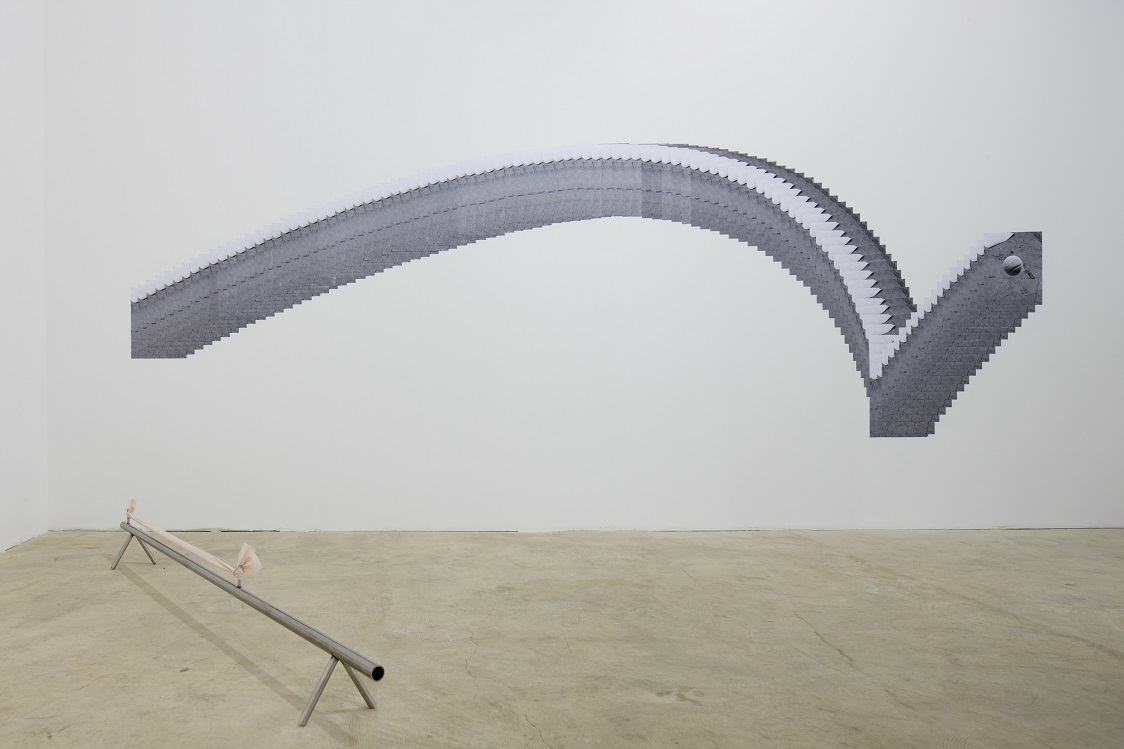
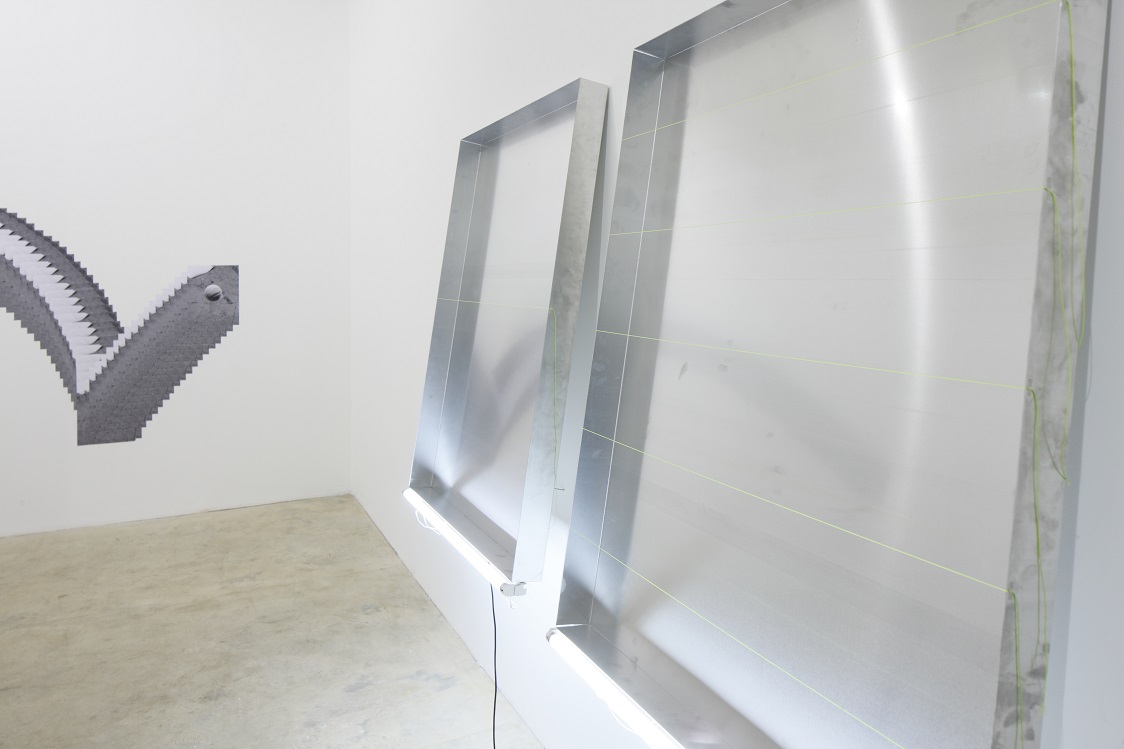
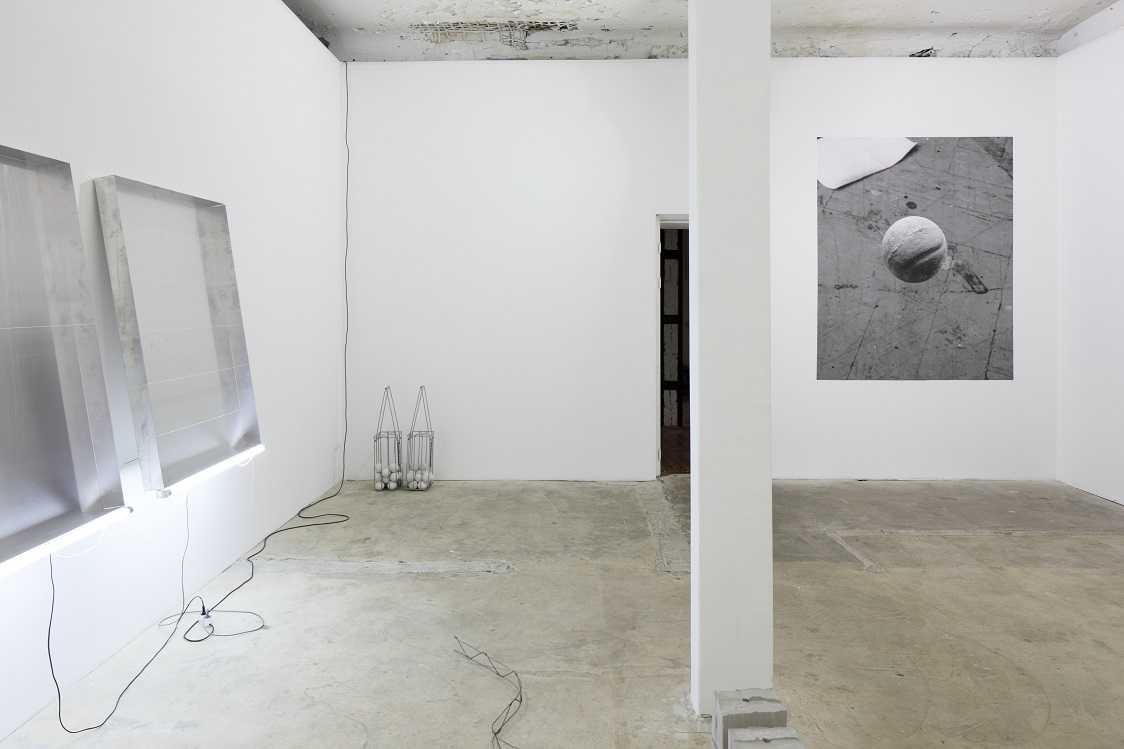

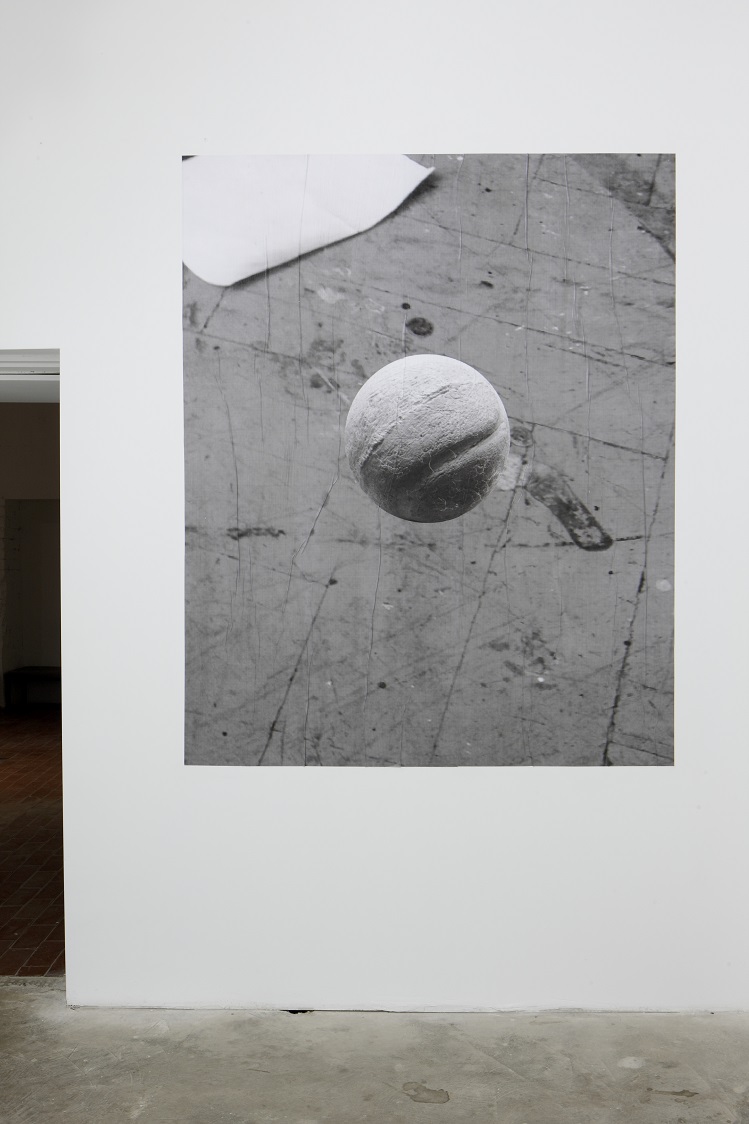
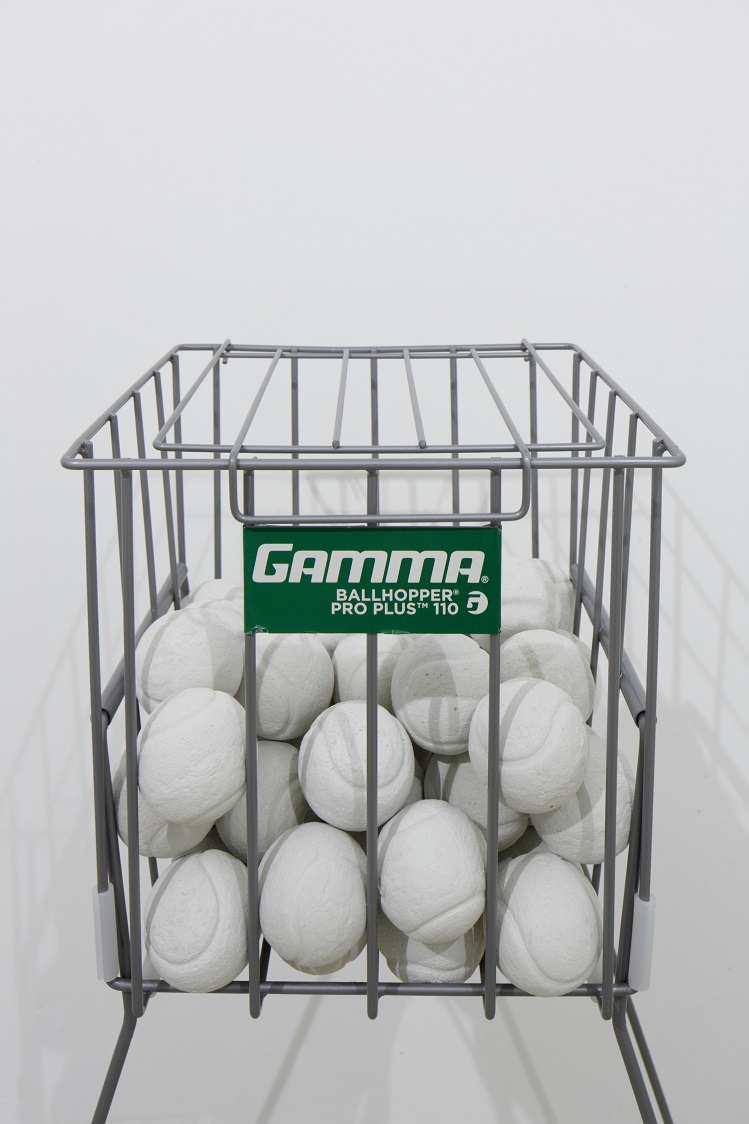
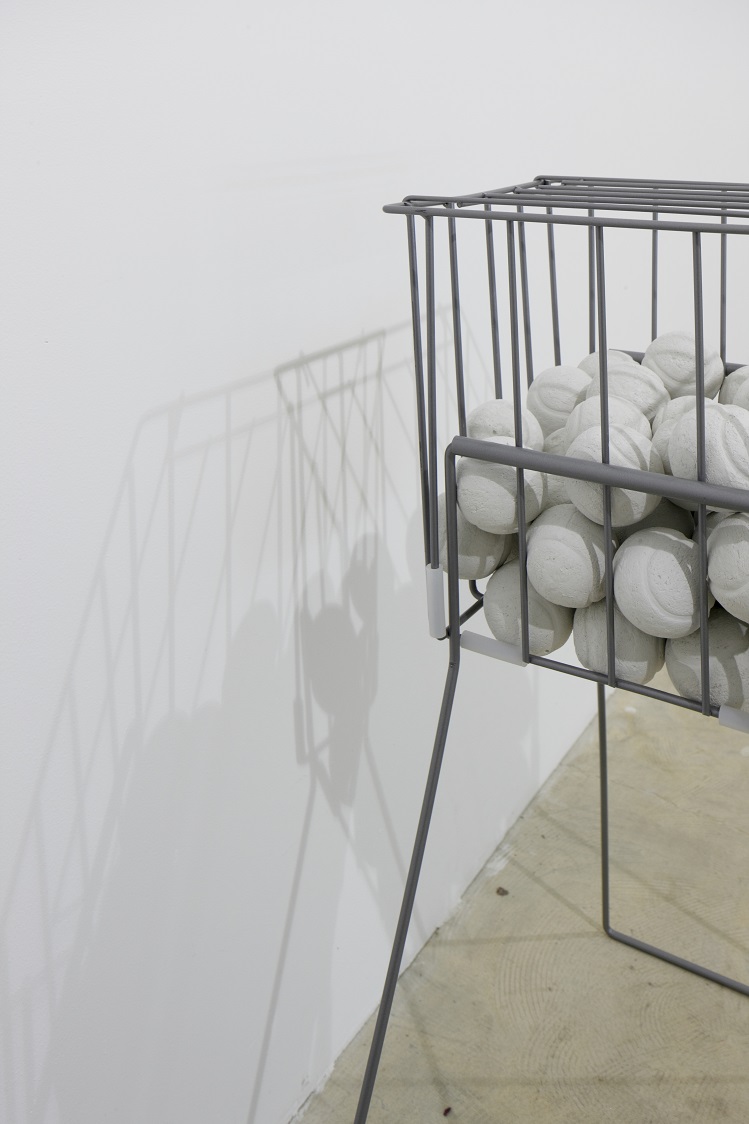

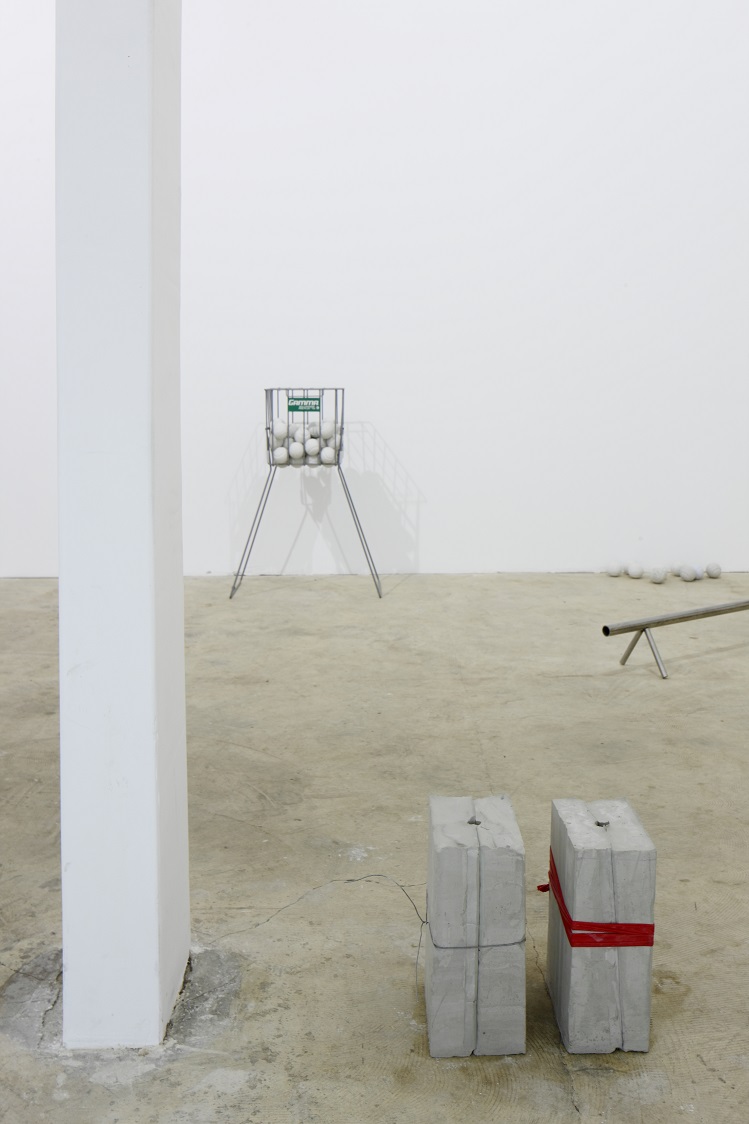
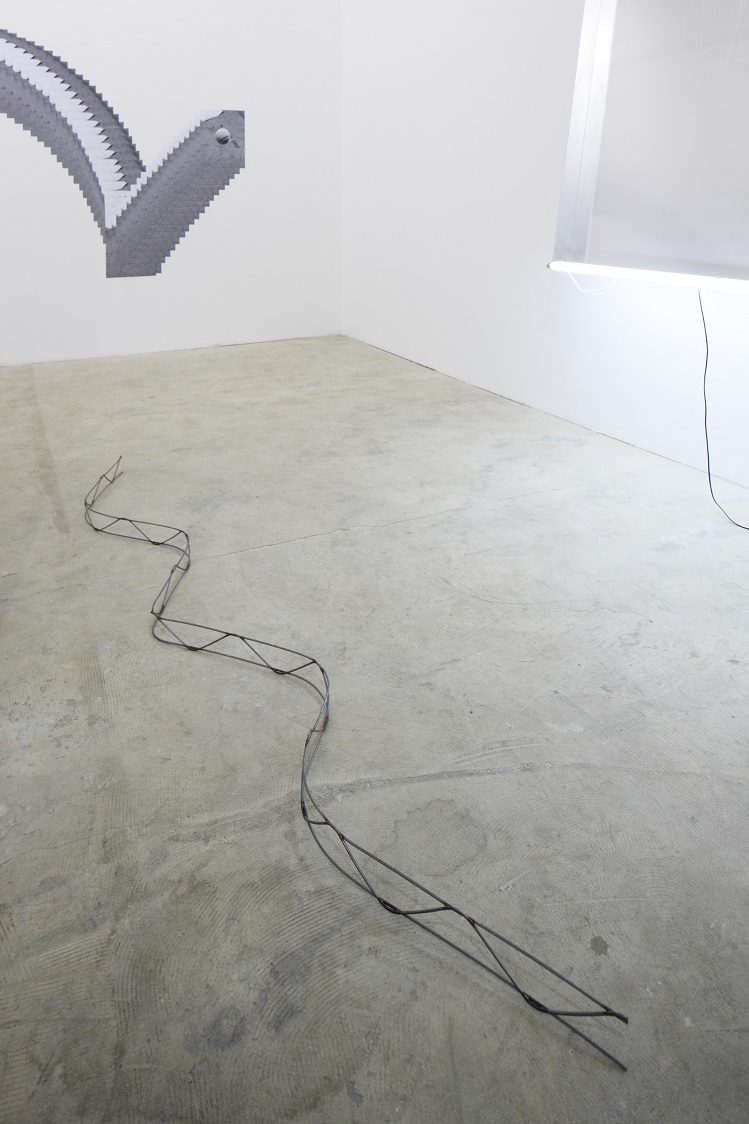

Tobias Kaspar
May 20 – July 9, 2017
kim? Contemporary Art Centre
In an essay on self-portraiture T.J. Clark once wrote: “Looking too hard at oneself is embarrassing. Even self-consciousness is an equivocal concept (more so in English than French): some contexts make it a high and difficult attainment, and others an unfortunate condition linked with adolescence and bad skin.” It is within this contradiction and slippery ground that Tobias Kaspar in this exhibition has produced a new set-up to continue his ongoing investigation of the genres of portraiture and self-portraiture. The exhibition follows Kaspar’s main guidelines as presented in the work Bodies in the Backdrop (2012), Friends, Lovers & Financiers (2014), Two Cities – Two Lives (2015), The Street (2016) and New Address, a publication, published earlier this year,which marked the artists move to Riga. Based on a longer series of artist talks titled Roommate Education, the publication picks up the genre of the “making of”. Best known from feature movies; the second, the side product, the “making of”, a tool to market “experience”, which suggests that the process of making the film provides more insight and necessary information about the film itself. These are also called the “resulting products”, a never ending game of a product of a product of a product.
The portrait Kaspar generates for this exhibition is a set-up dedicated to Leo Tolstoy’s Anna Karenina. Following a long history of women characters being used by male writers to make a point in regard to social political conditions, Anna Kareninais a prop set in the foreground meantto underline the background. The character that Tolstoy draws, and the conditions and circumstances that, today could be witnessed ina tragic Telenovela play, are carried out within the figure of Karenina.
Gertrude Stein’s “word-portraits” were written by arranging unrelated words in an insistent, repetitive style intended to capture the psychological essence of her subjects rather than any physiognomically visible “truths”. During the late 1910s and early 1920s, artists in the United States and Europe sought to create visual equivalents of Stein’s literary explorations. These “object portraits” exclude all figurative and retinal images of the sitter. By borrowing from advertisements, media images, and mail-order catalogues, Picabia created “mechanical” portraits in which he represented his friends and others by usingparts of machinery. For Proust or Bergson, portraiture involved an exploration of the “sitter’s” motives and circumstances.
A central element of this exhibition poses a text-photo work Anna K. with close-ups from tennis courts in Riga and Rome and selected sentences from Tolstoy’s novel on themes such as farming, domestic life, currency and the socio-political setting of the novel’s main plot. The photographs are accompanied by an installation made out of objects selected in regard to their attributed symbolic value of class and lifestyle. Many of the appropriated objects’ – in the exhibition cast in porcelain or bronze – original producers from Latvia and elsewhere are listed as the exhibition’s corporate sponsors.
This portrait is a messy one, a complex mix of ambiguities and contradictions, of containment, detachment, distance, sang-froid and self-possession. The opening at kim?coincides with the time the ballet “Anna Karenina” is being staged at the Latvian National Opera and Ballet, which celebrates the 10th anniversary of being in the Opera’s repertoire. By the thematic choice of Anna Karenina, Kaspar is creating a site-specific installation with closeness and pointing out to another cultural event, another genre surrounded by artistic tension and apparent dependency.
Last spring Tobias Kaspar (b. 1984) staged the 24h exhibition The Street inside the Cinecittà Film Studios in Rome. The year before, the artist opened Toby’s Tristram Shandy Shop at Udolpho in Berlin to sell first editions of Laurence Sterne’s The Life and Opinions of Tristram Shandy, Gentleman. In 2012, Tobias Kaspar founded his eponymous jeans line and since 2009 he is the co-publisher of PROVENCE – an eight-issue magazine dedicated to leisure. He is also the initiator and founder of The Latvian Institute Rome. Tobias Kaspar’s work has been shown in numerous institutions, including the Museum of Modern Art in Warsaw (2016), Istituto Svizzero di Roma (2015), Wattis Institute for Contemporary Art, San Francisco (2015), Solo Shows, São Paulo (2015), CAFAM Biennale, Beijing (2014), Kunsthalle Wien (2014), Kunsthalle St. Gallen (2014), Midway Contemporary Art, Minneapolis (2013), Artists Space, New York (2013), Palais de Tokyo, Paris (2012), Kunsthalle Zürich (2011), Kunsthalle Basel (2011), Museum Hamburger Bahnhof, Berlin (2011), Kunsthaus Bregenz (2011), Künstlerhaus Stuttgart (2010).
Thanks to Oskars Mikāns for the bronze work, Oksana Miķelsone of Krāsaino Metālu Manufaktūra for her generosity, Aleksandrs Kass for the porcelain casts, Inese Pētersone for her support at Rīgas Dizaina un mākslas vidusskola, as well as Egija Inzule, Iris Kaspar, Pascal Storz, Andris Landaus and Jānis Noviks.
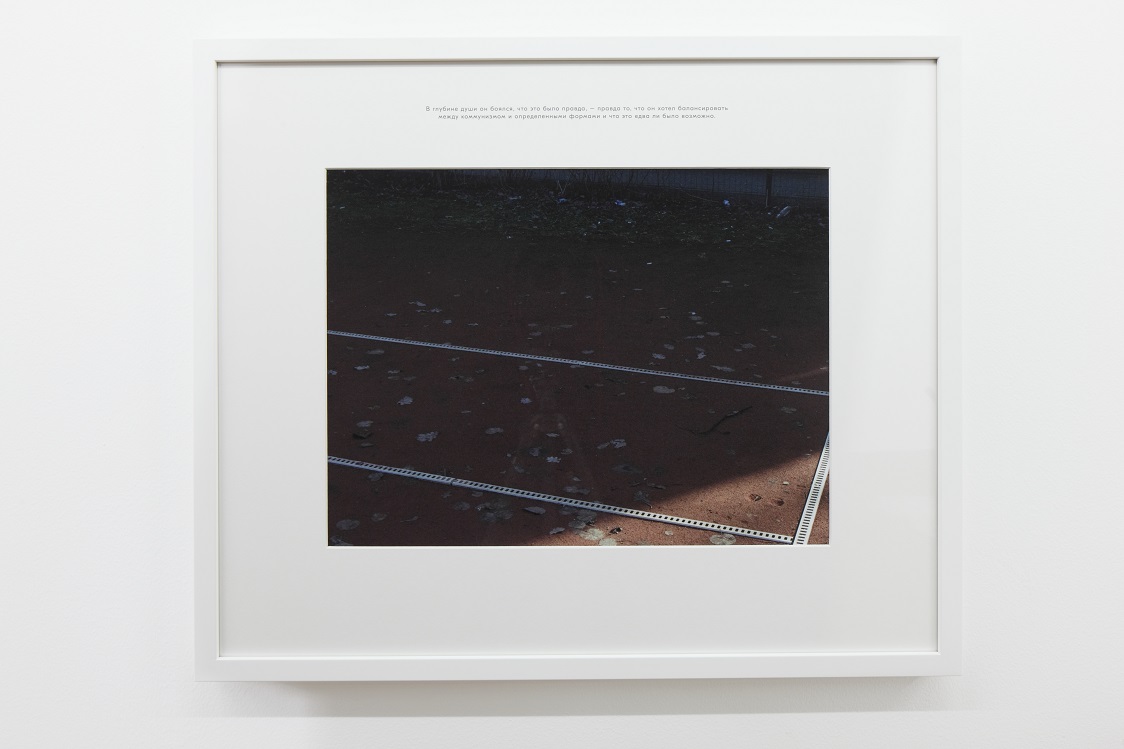
“At the bottom of his heart he felt that is was true–true that he wished to balance between communism and the existing forms of life, and that this was hardly possible.” Tobias Kaspar, Anna K., 2017 set of 9 framed inkjet print photographs with text.
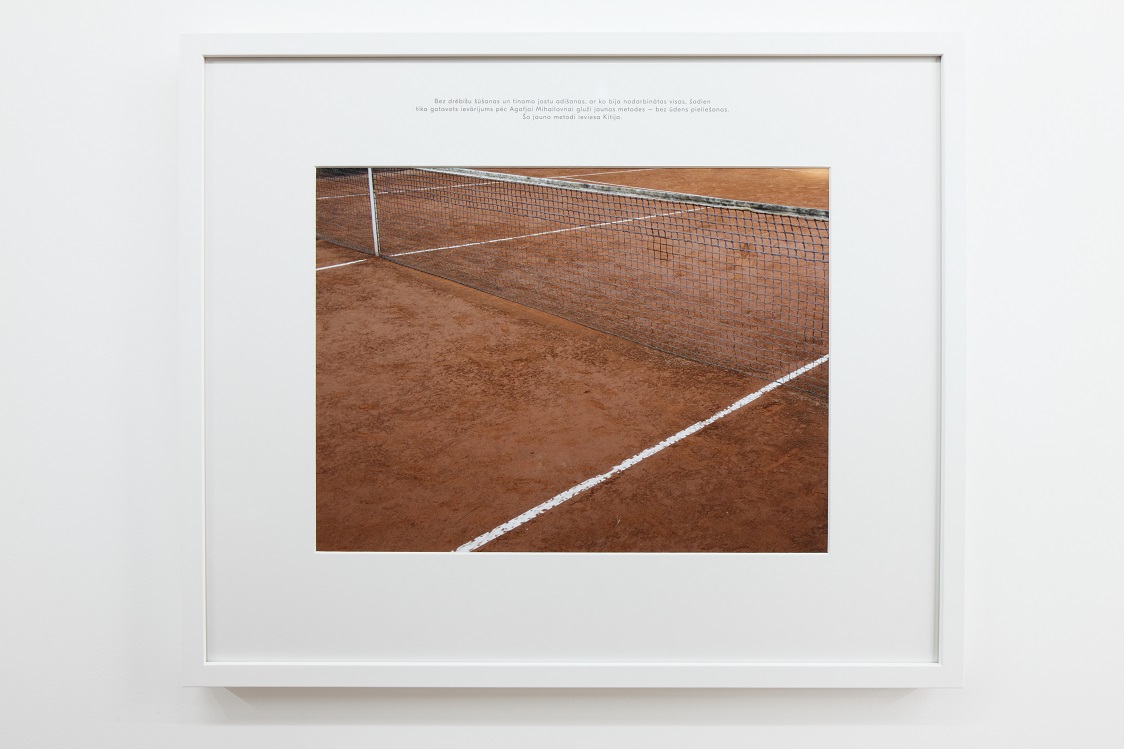
“Besides the sewing of little shirts and the knitting of swaddling bands, on which they were all engaged, today jam was being made there in a way new to Agatha Mikhaylovna: without the addition of sugar and water to the fruit. Kitty was introducing this new way.” Tobias Kaspar, Anna K., 2017 set of 9 framed inkjet print photographs with text.
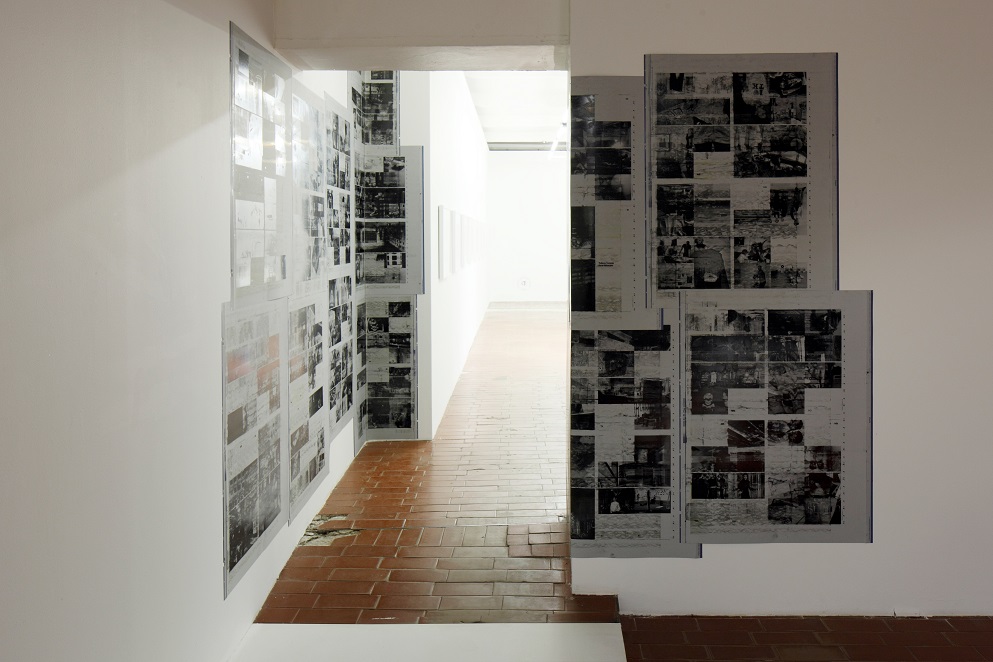
Exhibition view, kim? Contemporary Art Centre, 2017
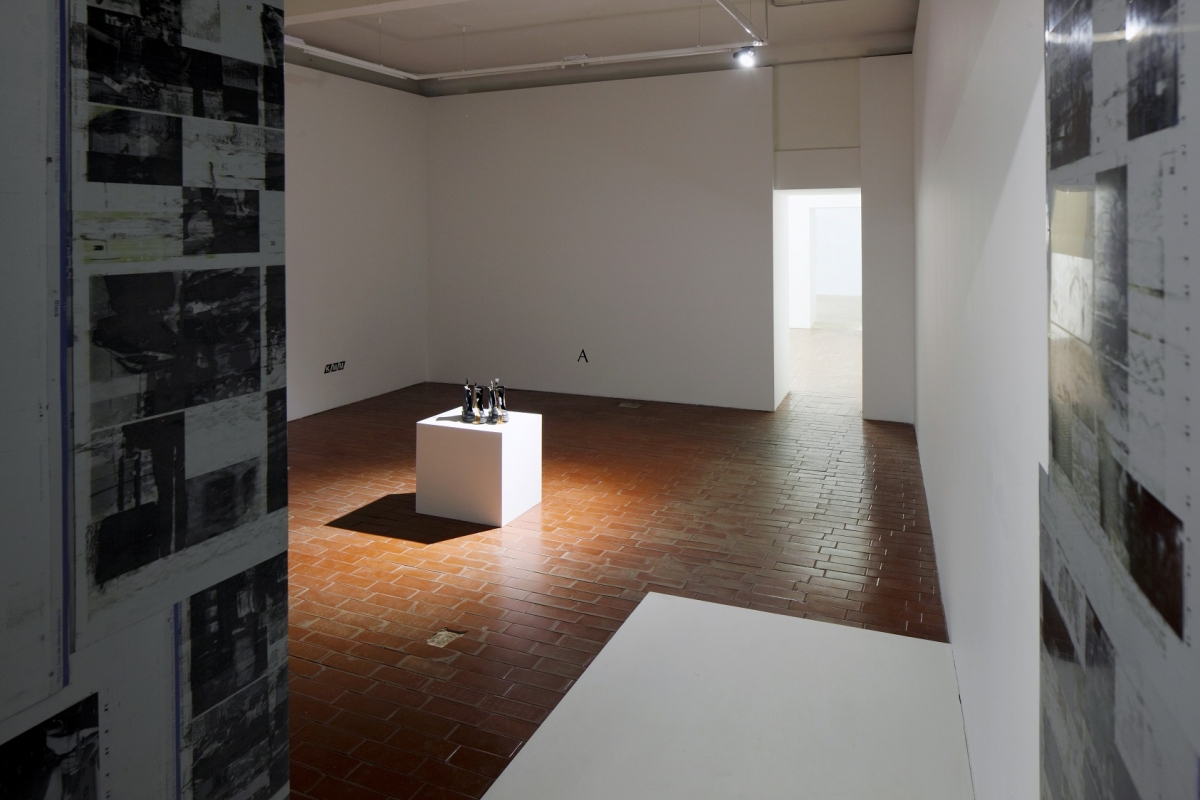
Exhibition view, kim? Contemporary Art Centre, 2017
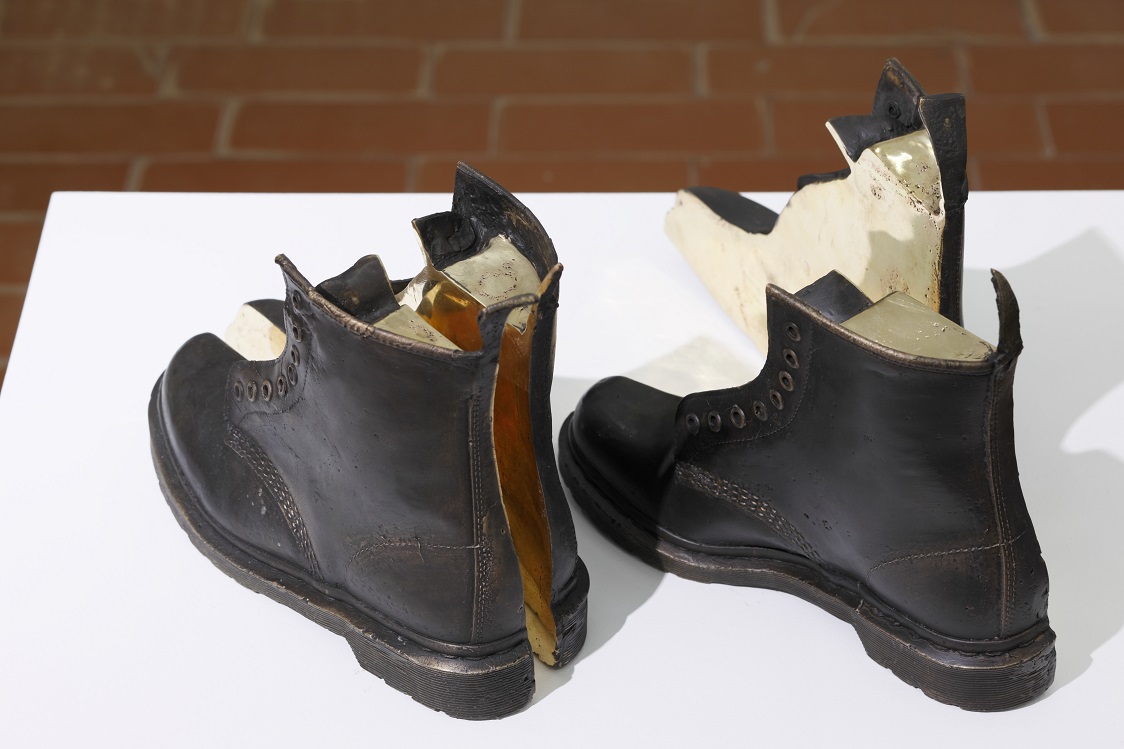
Exhibition view, kim? Contemporary Art Centre, 2017

Exhibition view, kim? Contemporary Art Centre, 2017
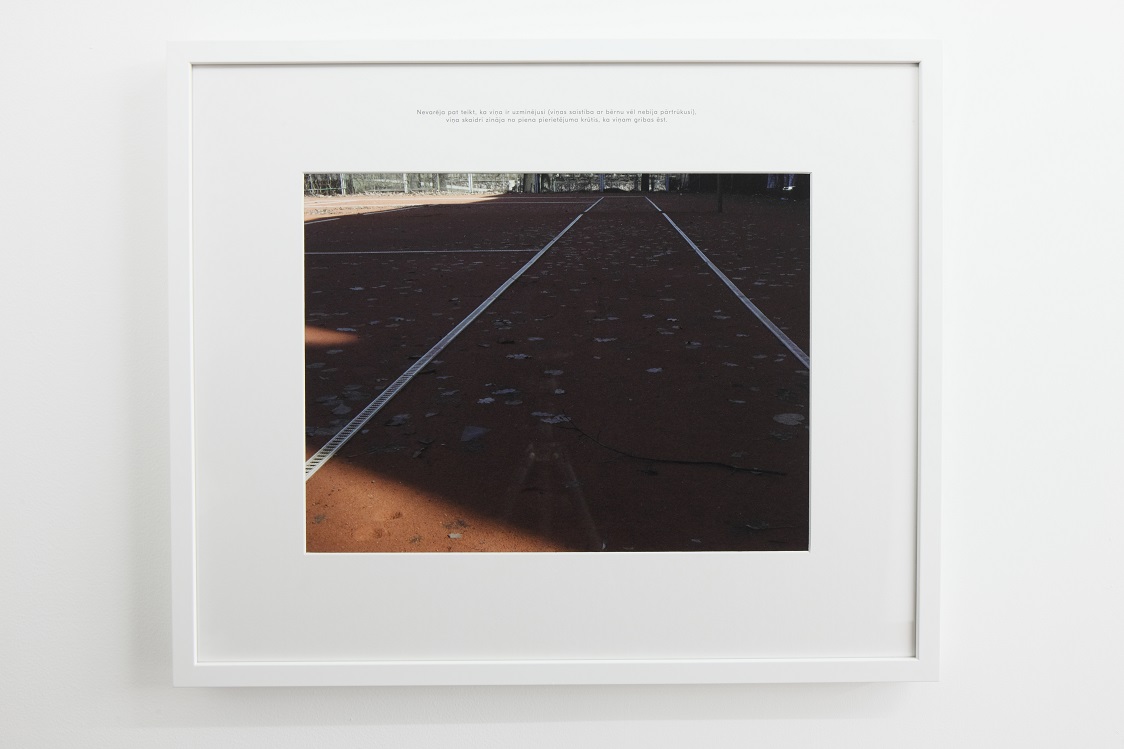
“It was not a mere guess–the bond between herself and the baby had not yet been severed–and she knew surely by the flow of milk within herself that he was wanting food.” Tobias Kaspar, Anna K., 2017 set of 9 framed inkjet print photographs with text.
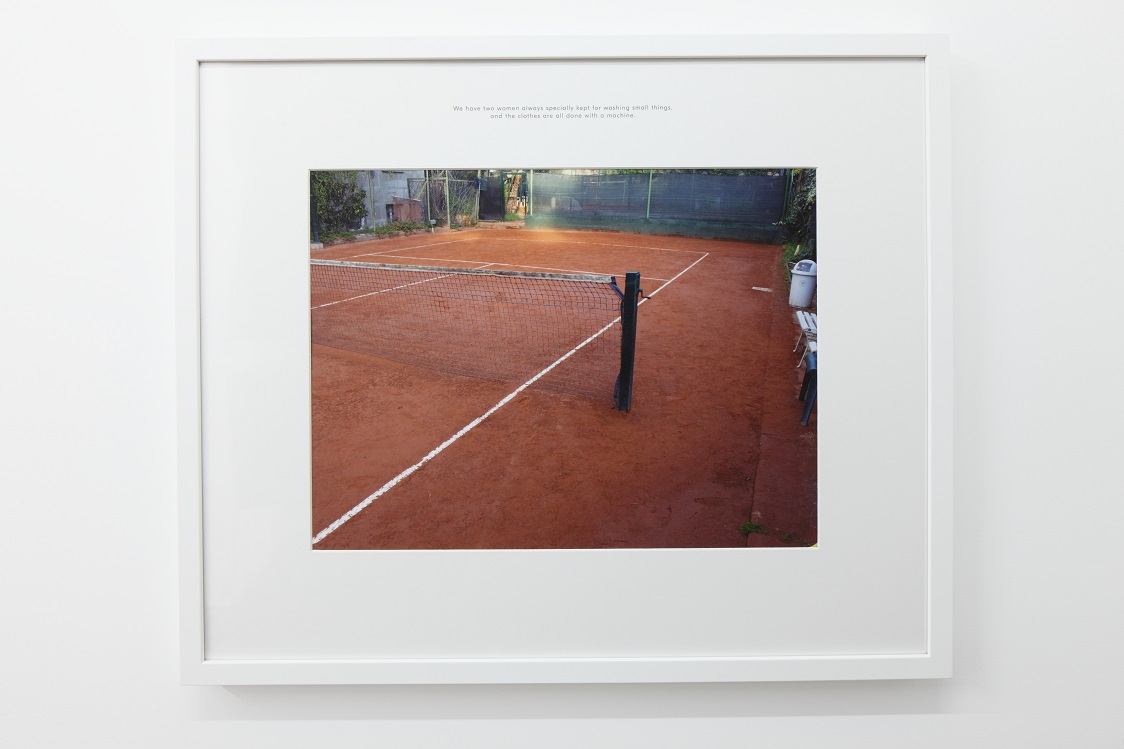
“We have two women always specially kept for washing small things, and the clothes are all done with a machine.” Tobias Kaspar, Anna K., 2017 set of 9 framed inkjet print photographs with text.
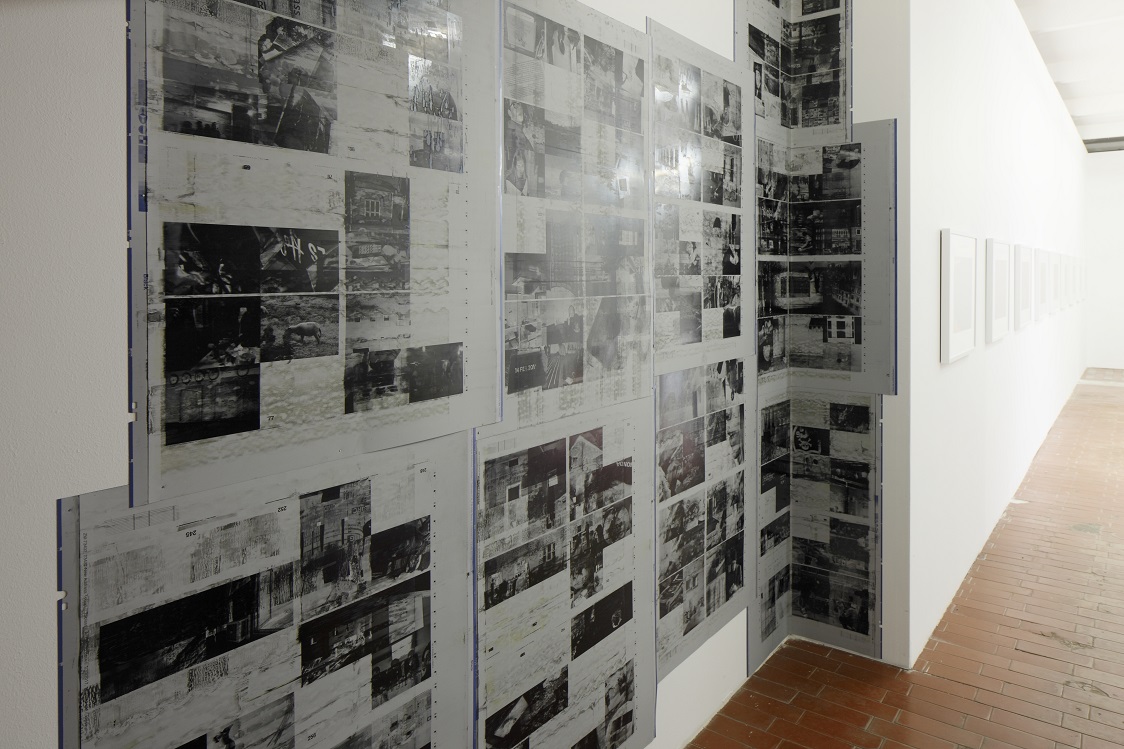
Exhibition view, kim? Contemporary Art Centre, 2017
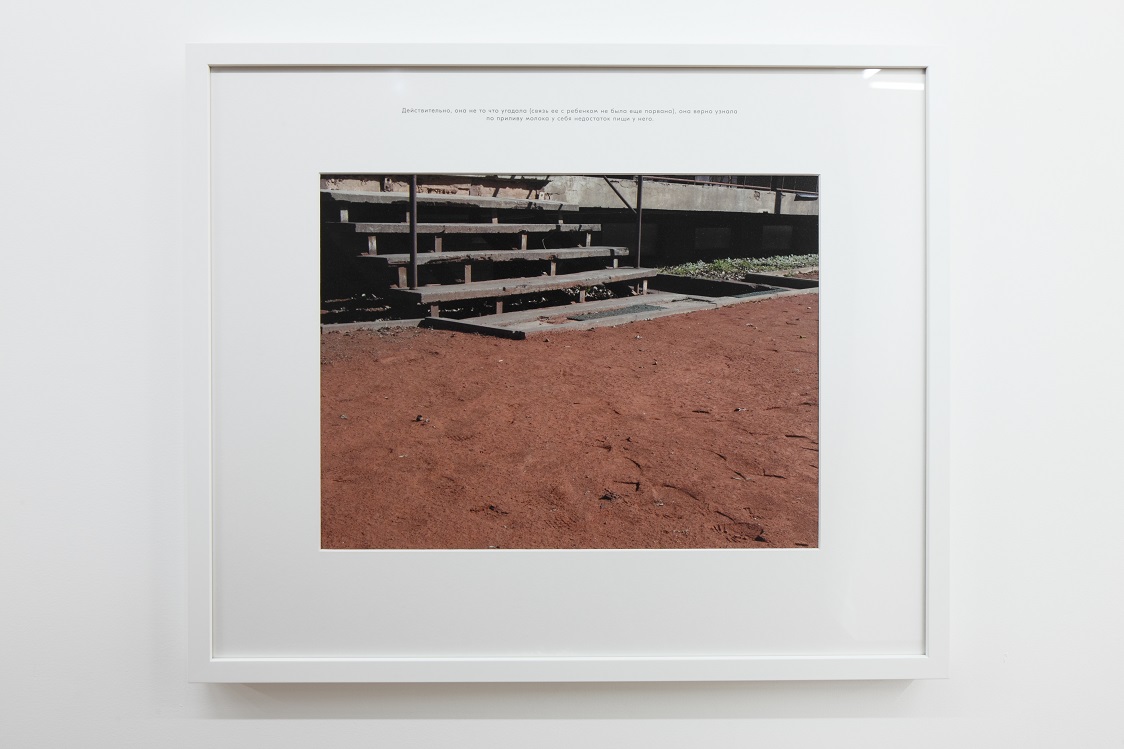
“It was not a mere guess–the bond between herself and the baby had not yet been severed–and she knew surely by the flow of milk within herself that he was wanting food.” Tobias Kaspar, Anna K., 2017 set of 9 framed inkjet print photographs with text.
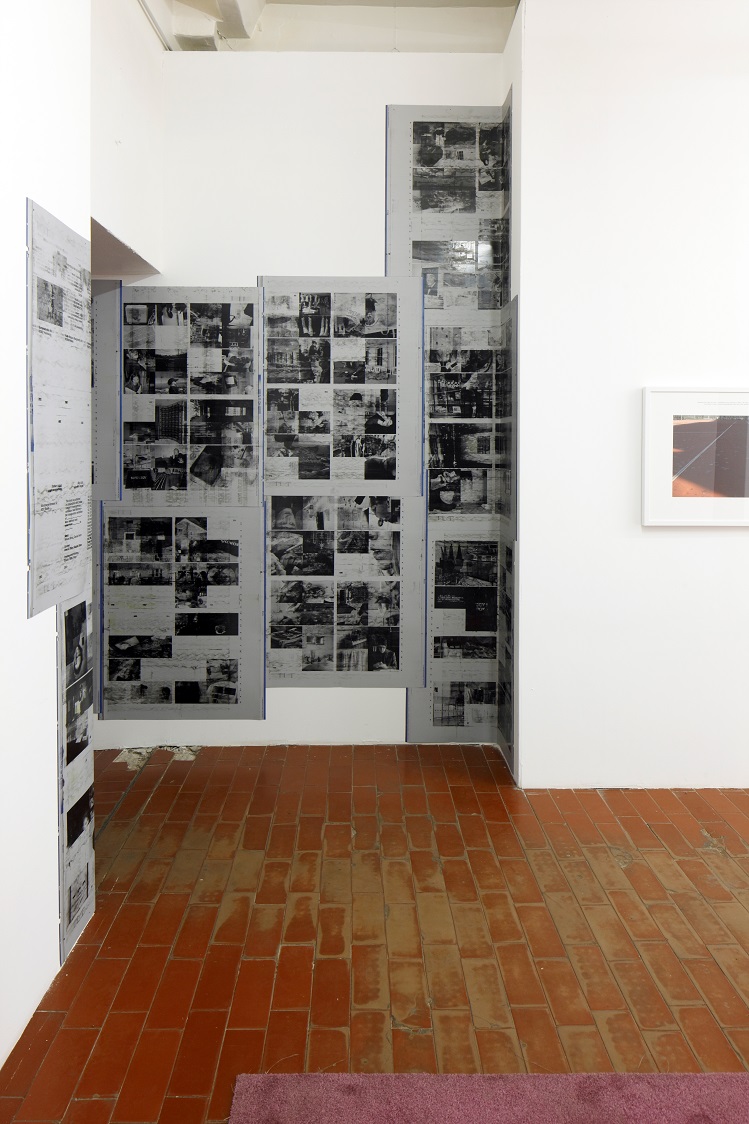
Exhibition view, kim? Contemporary Art Centre, 2017

Exhibition view, kim? Contemporary Art Centre, 2017
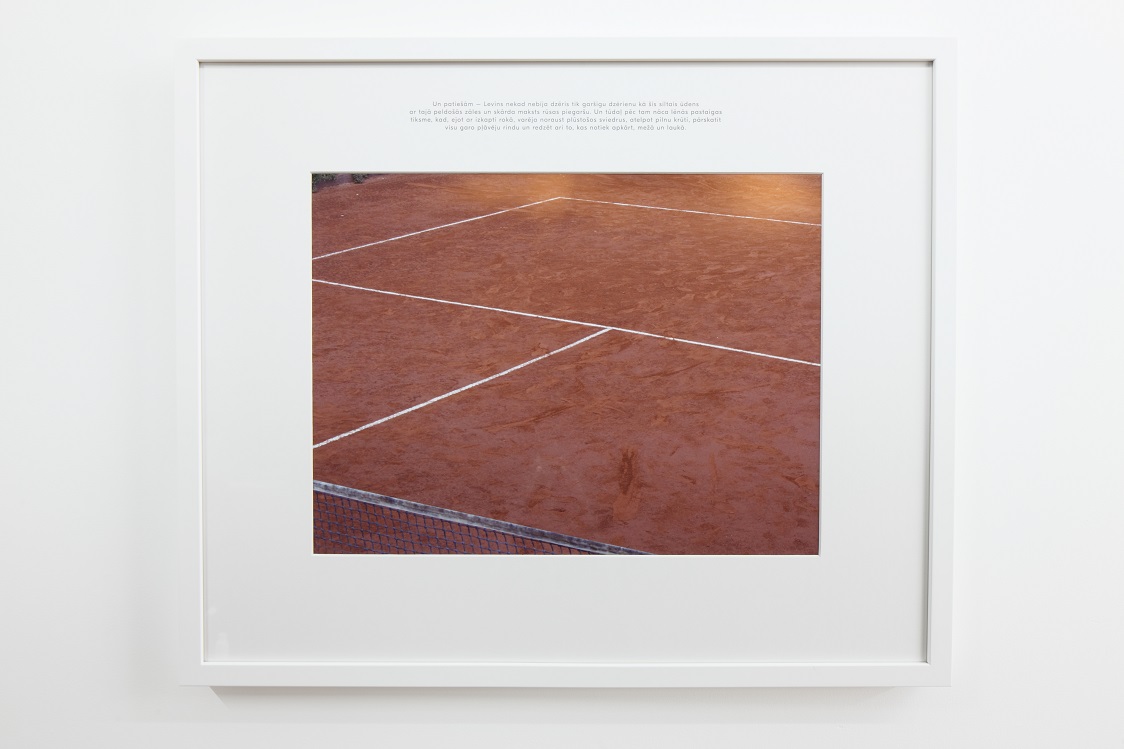
“And really Levin thought he had never tasted any nicer drink than this lukewarm water with green stuff floating in it and a flavour of the rusty tin box. And then came the ecstasy of a slow walk, one hand resting on the scythe, when there was leisure to wipe away the streams of perspiration, to breathe deep, to watch the line of mowers, and to see what was going on around in forest and field.” Tobias Kaspar, Anna K., 2017 set of 9 framed inkjet print photographs with text.
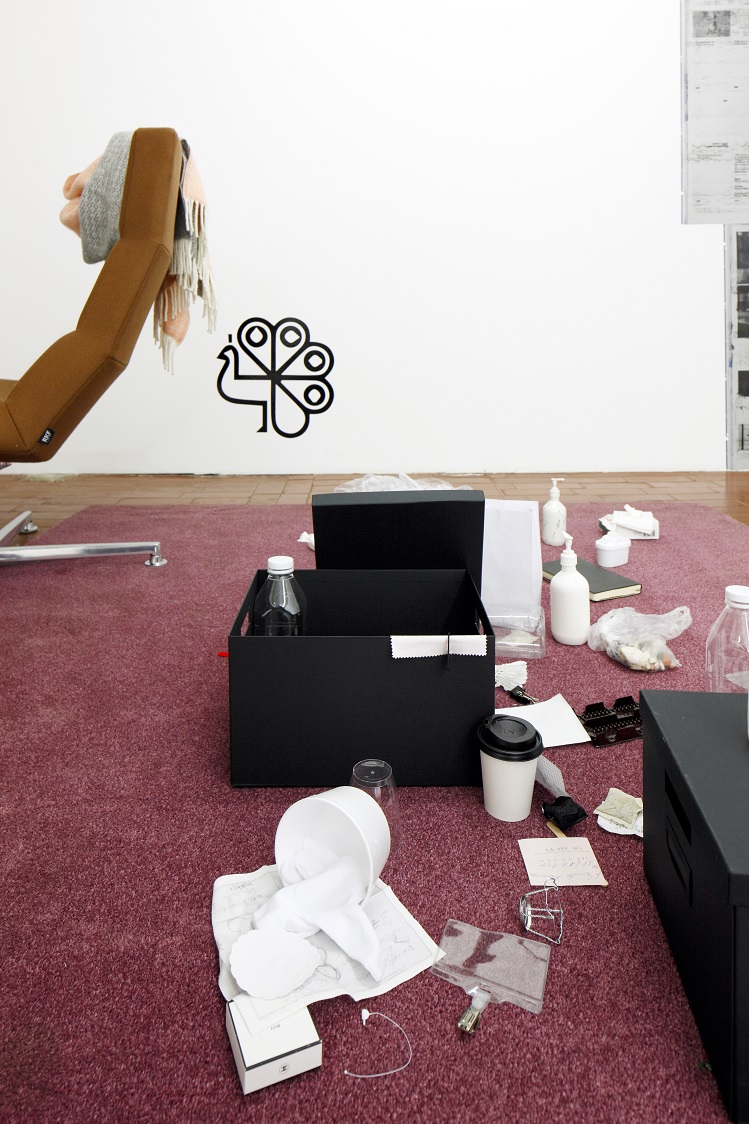
Exhibition view, kim? Contemporary Art Centre, 2017

Exhibition view, kim? Contemporary Art Centre, 2017
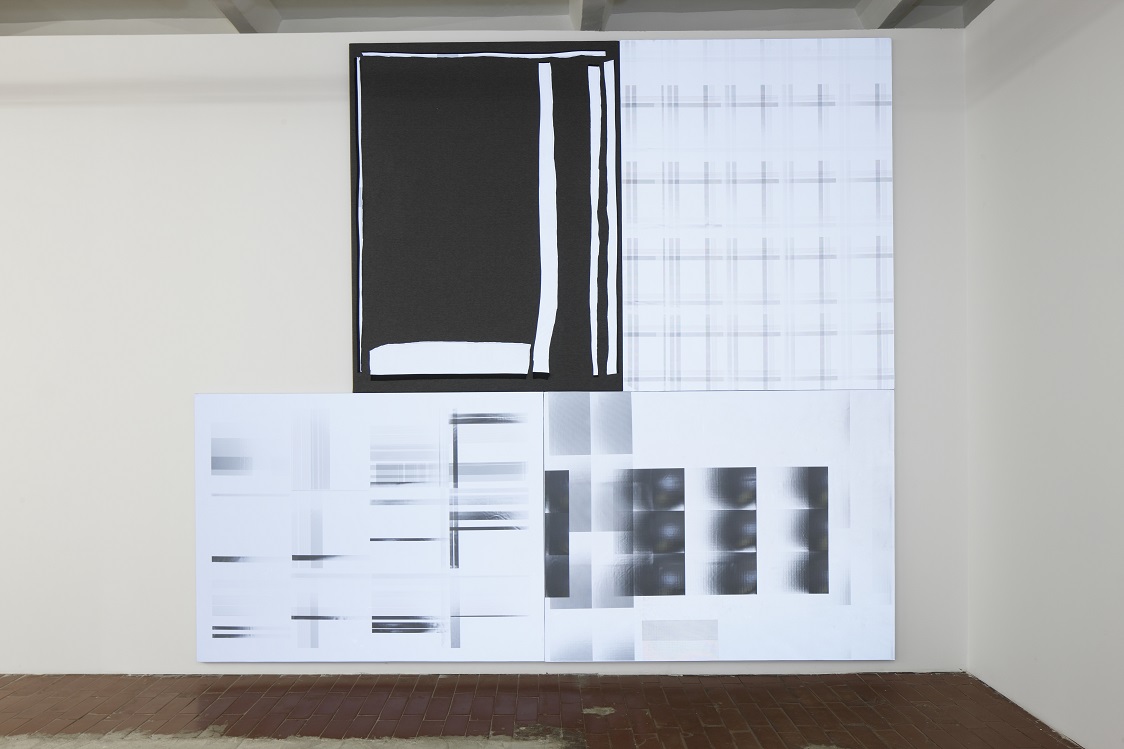
Exhibition view, kim? Contemporary Art Centre, 2017
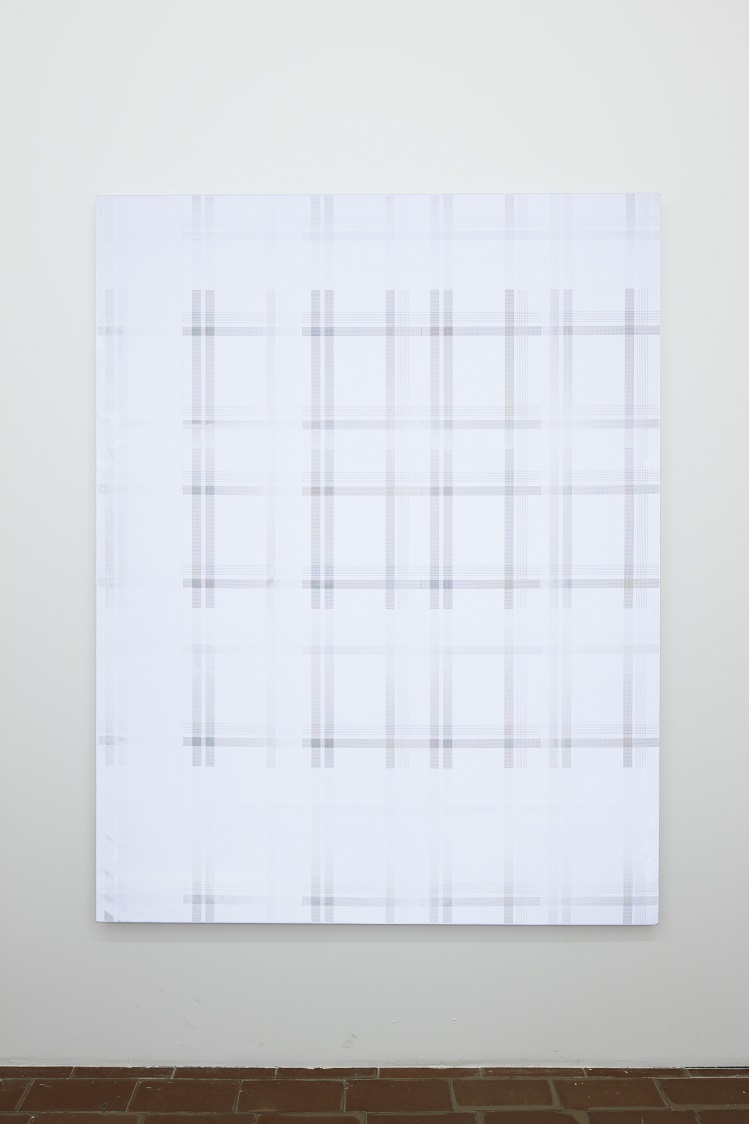
Exhibition view, kim? Contemporary Art Centre, 2017
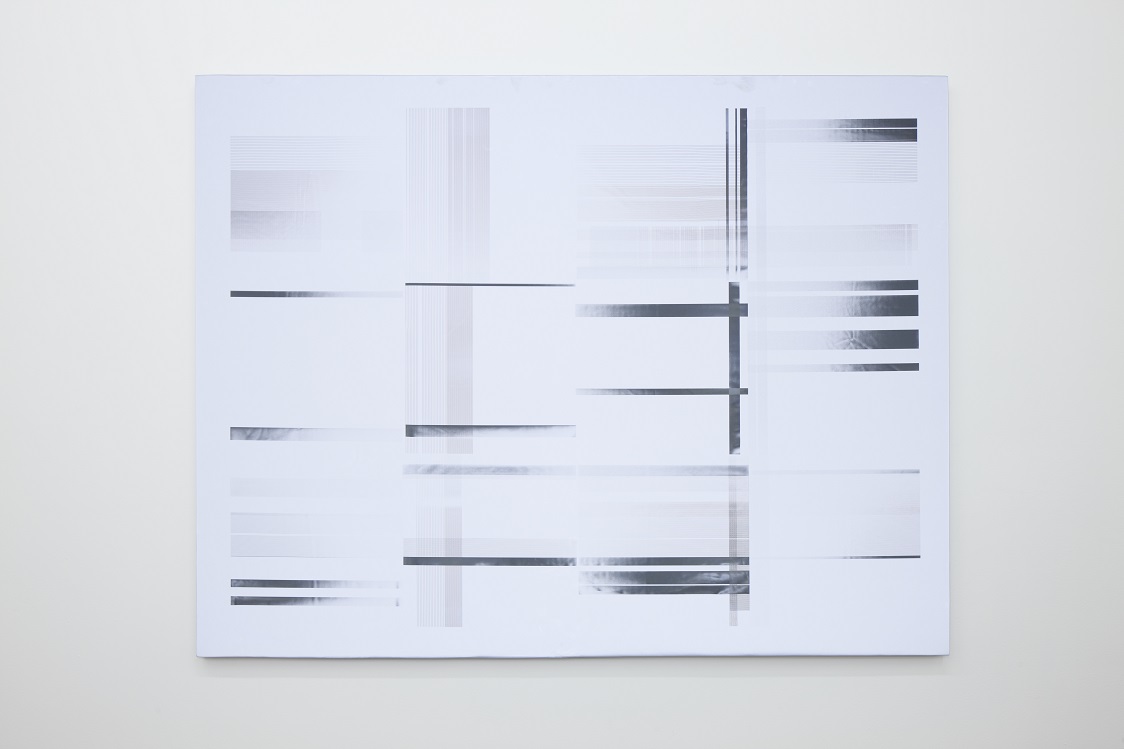
Exhibition view, kim? Contemporary Art Centre, 2017

Exhibition view, kim? Contemporary Art Centre, 2017

Exhibition view, kim? Contemporary Art Centre, 2017
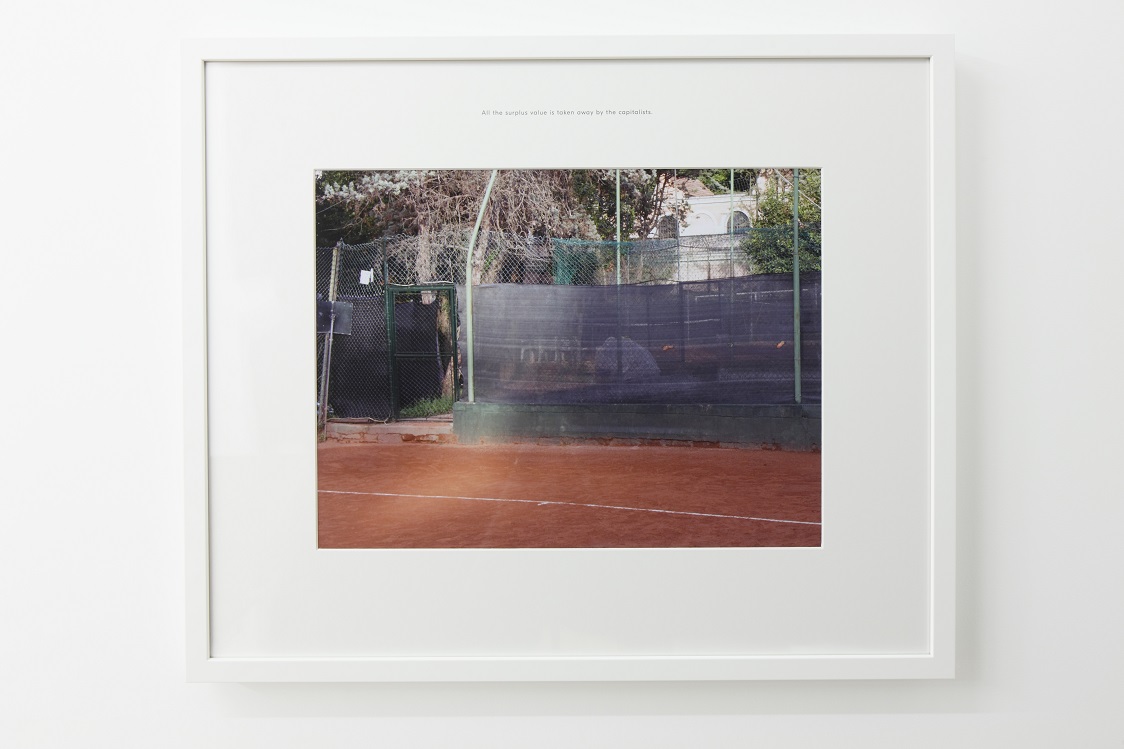
“All the surplus value is taken away by the capitalists.” Tobias Kaspar, Anna K., 2017 set of 9 framed inkjet print photographs with text.

Exhibition view, kim? Contemporary Art Centre, 2017
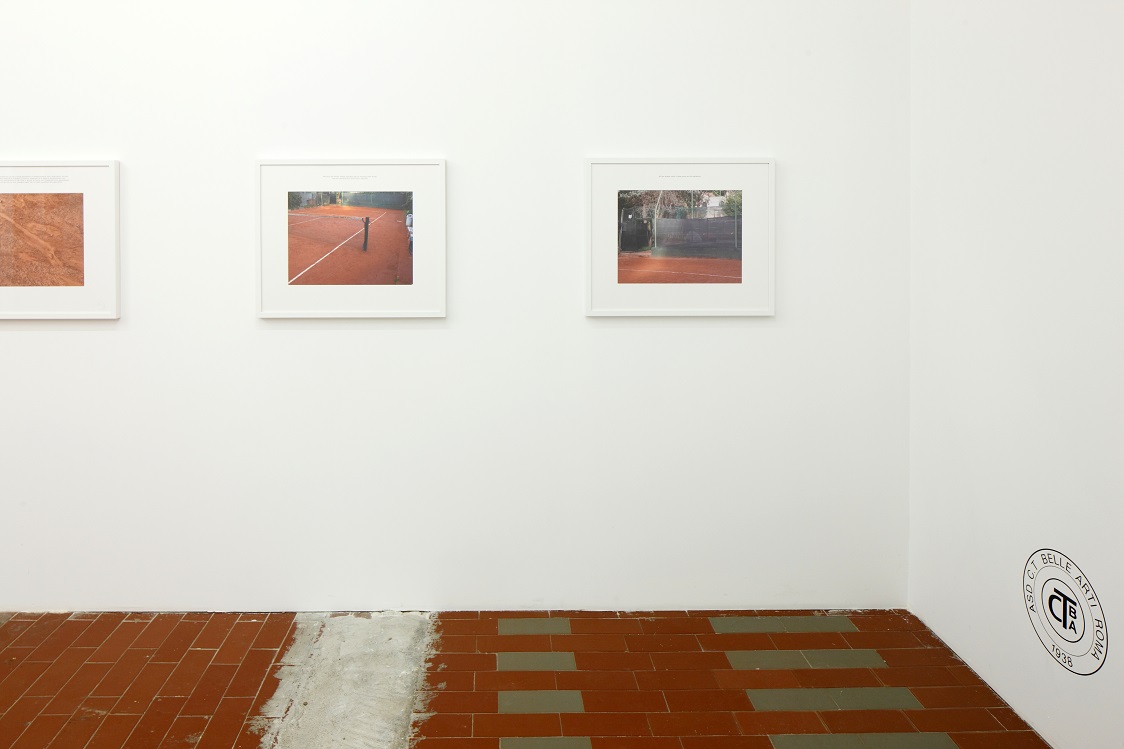
Exhibition view, kim? Contemporary Art Centre, 2017
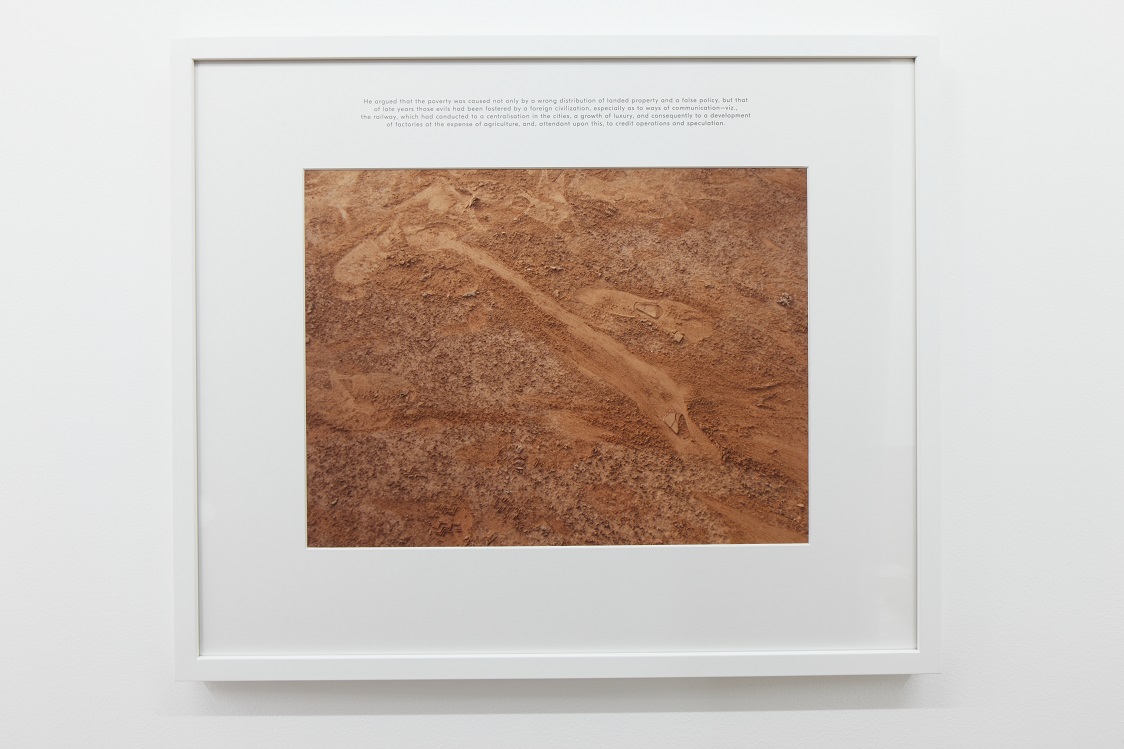
“He argued that the poverty was caused not only by a wrong distribution of landed property and a false policy, but that of late years those evils had been fostered by a foreign civilization, especially as to ways of communication–viz., the railway, which had conducted to a centralisation in the cities, a growth of luxury, and consequently to a development of factories at the expense of agriculture, and, attendant upon this, to credit operations and speculation.” Tobias Kaspar, Anna K., 2017 set of 9 framed inkjet print photographs with text.

Exhibition view, kim? Contemporary Art Centre, 2017
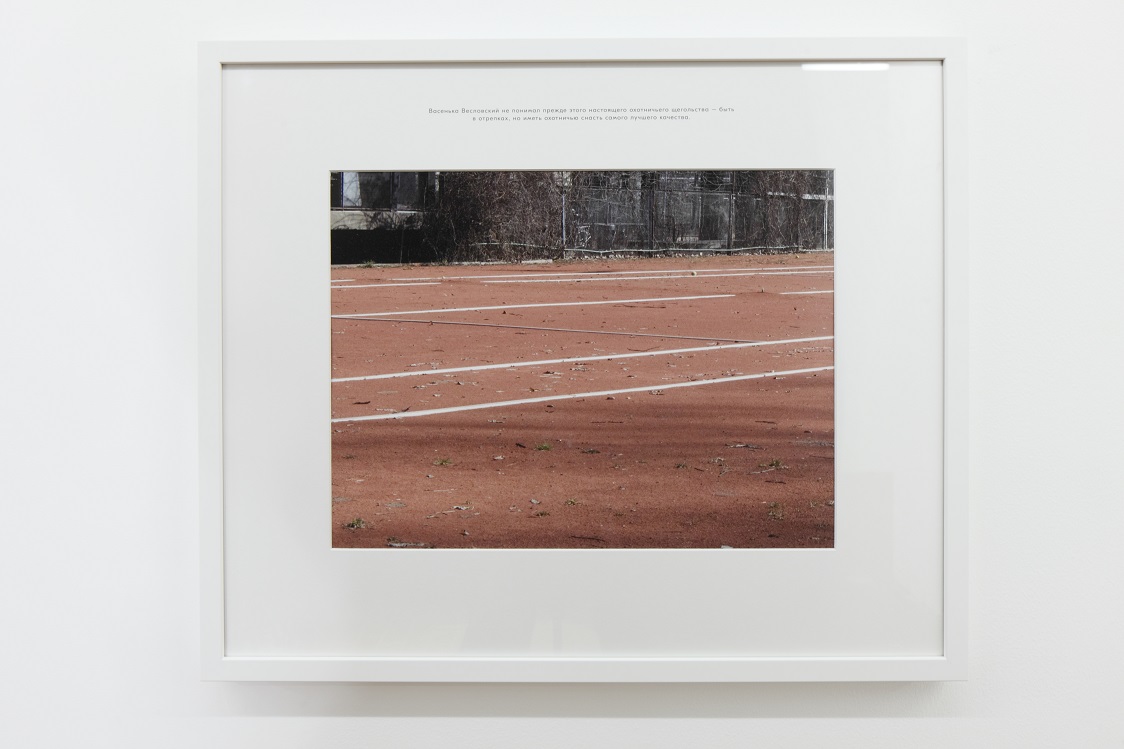
“Vasenka had been ignorant that the stylishness of a real sportsman consists in being dressed in rags but having one’s shooting implements of the very best quality.” Tobias Kaspar, Anna K., 2017 set of 9 framed inkjet print photographs with text.

Exhibition view, kim? Contemporary Art Centre, 2017
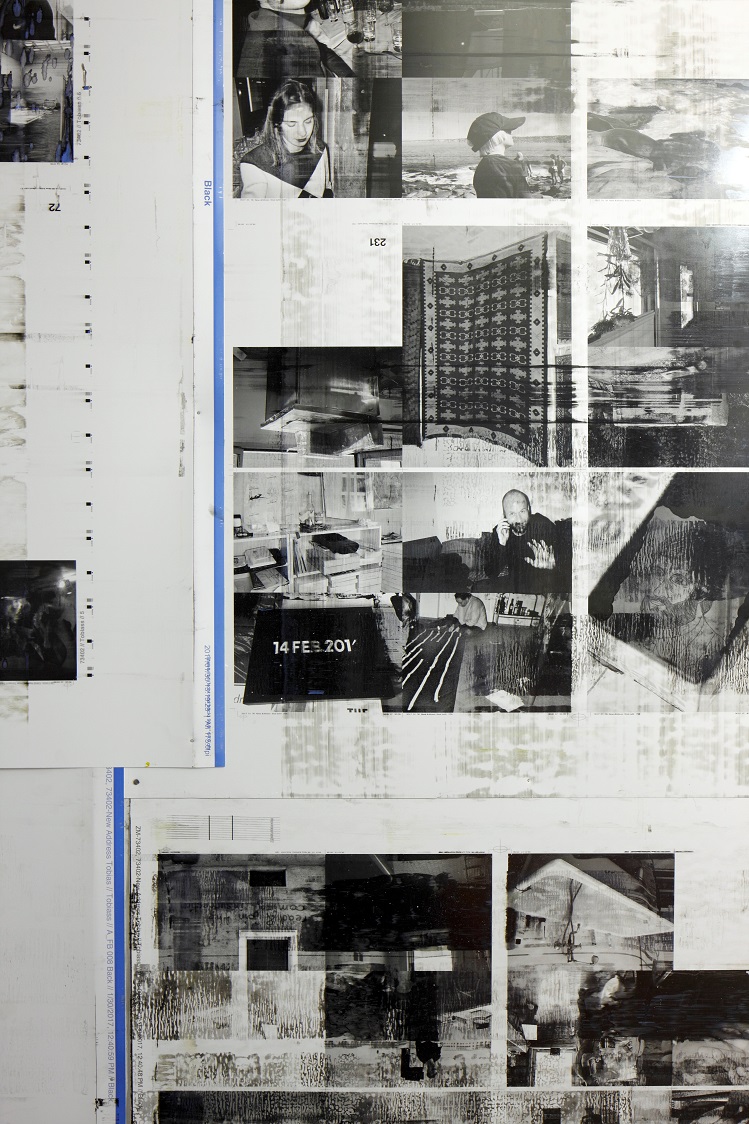
Exhibition view, kim? Contemporary Art Centre, 2017
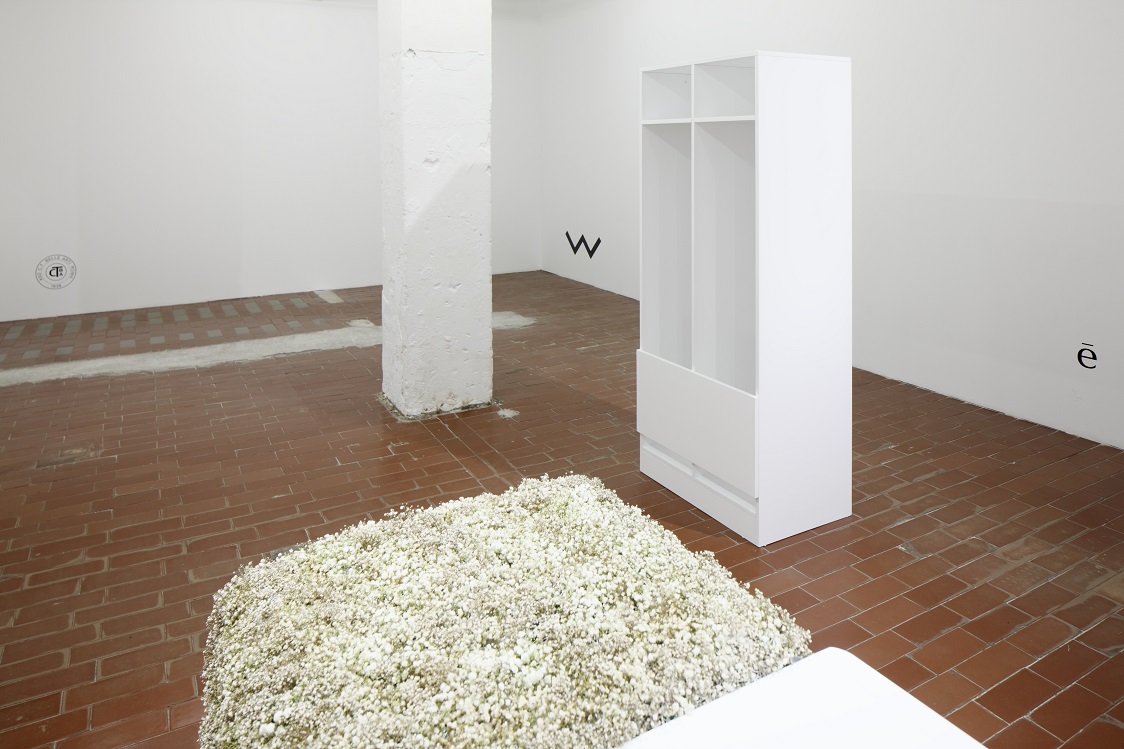
Exhibition view, kim? Contemporary Art Centre, 2017

Exhibition view, kim? Contemporary Art Centre, 2017
Photography: Ansis Starks, courtesy kim? Contemporary Art Centre and the artists
























